Supplemental lighting greenhouse system is increasingly used for crops such as cannabis or tomatoes. However, the investment is very high and the operating costs are significant. The difference between HPS (High Pressure Sodium) and LED is not easy: HPS requires less investment but electricity consumption is higher and more heat is generated.
Design the supplemental lighting system of your greenhouse
1. Design your supplementary lighting greenhouse system
Hortinergy helps you to design your supplemental lighting greenhouse system with optimal climate for any project wordwide. You will be able to define the best equipment configuration to reduce your energy cost.
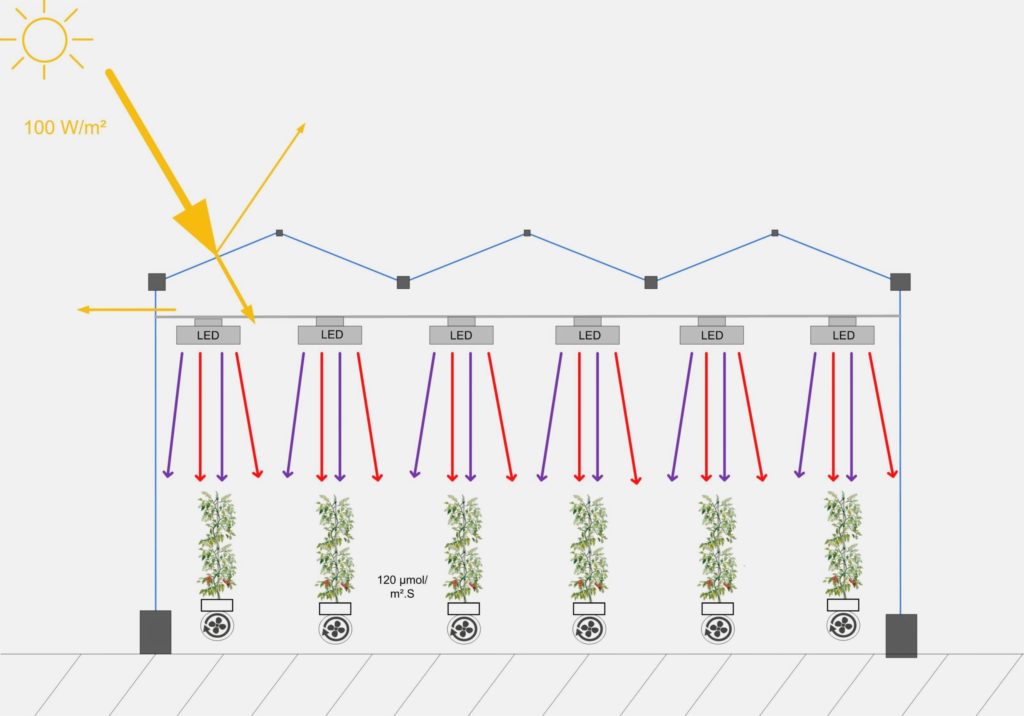
Hortinergy is a very friendly software:
- You enter the input parameters online: lighting specification, regulation setpoints, transparent cover…
- Hortinergy models solar transmission, assimilation lighting and inner climate for one year,
- Hortinergy simulates energy consumption: heating, cooling, dehumidification.
Then you can assess the impact of many parameters and compare scenarios.
2. Input parameters to define the assimilation lighting system in your greenhouse
Input parameters are:
- LED and HPS specification: lighting intensity, efficiency…
- Regulation setpoints:
- Day Light Integral (DLI) and minimum ‘’night’’ hour per day,
- or fixed monthly calendar,
- beyond which solar radiation, the lighting system is desactivated,
- Specification of the transparent cover of the greenhouse,
- Specification of the blackout and shading screens and their adjustment points,
- GPS position to generate a weather file.
An example is shown below:
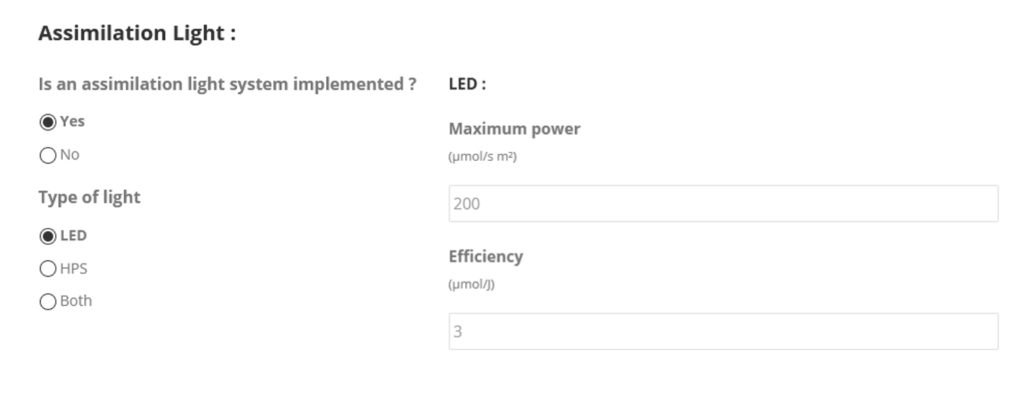
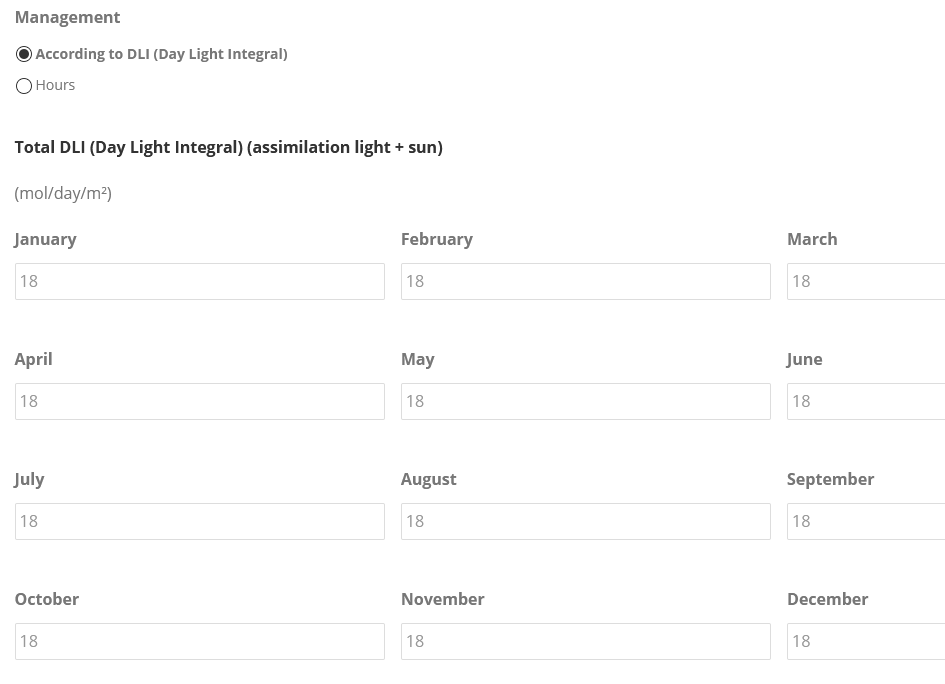
You can also define the blackout screen and its regulation setpoints as shown below:
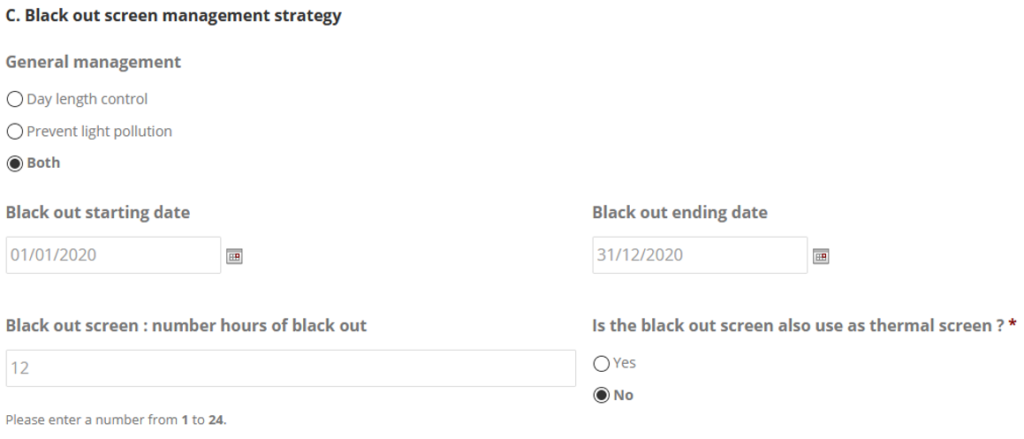
3. Results
Hortinergy simulates your project for one year as a virtual greenhouse.
The results are:
- Solar radiation transmitted through the transparent cover and reaching the canopy,
- Supplemental lighting greenhouse required according to regulation setpoints (mol/m²/day):
- Day Light Integral (DLI),
- or fixed monthly schedule,
- Electricity consumption,
- Impact on the inner climate and energy consumption: heating, cooling, dehumidification.
The reports are:
- a pdf document with typical days and monthly summary tables
- an Excel file with hourly data for deeper analysis.
Solar radiation reaching canopy and supplemental lighting required
Hortinergy simulates on an hourly basis the solar radiation reaching canopy and the additional assimilation lighting required to reach the DLI.
The example below shows a monthly summary:
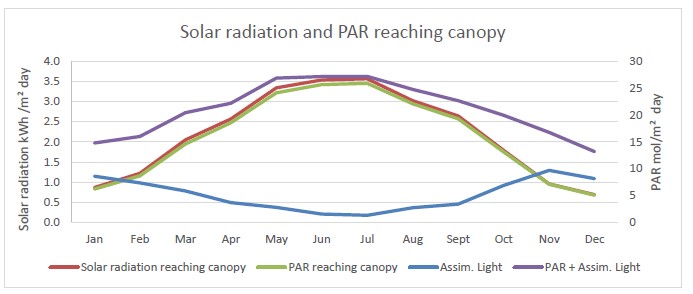
Impact on the inner climate and energy consumption
Hortinergy models the impact of supplementary lighting on the inner climate and energy consumption (heating, cooling, dehumidification, lighting and ventilation).
The example below shows the crop transpiration and a higher inner temperature when HPS assimilation lighting is switched on from to 9 to 11 AM and 4 to 9 PM to reach DLI.
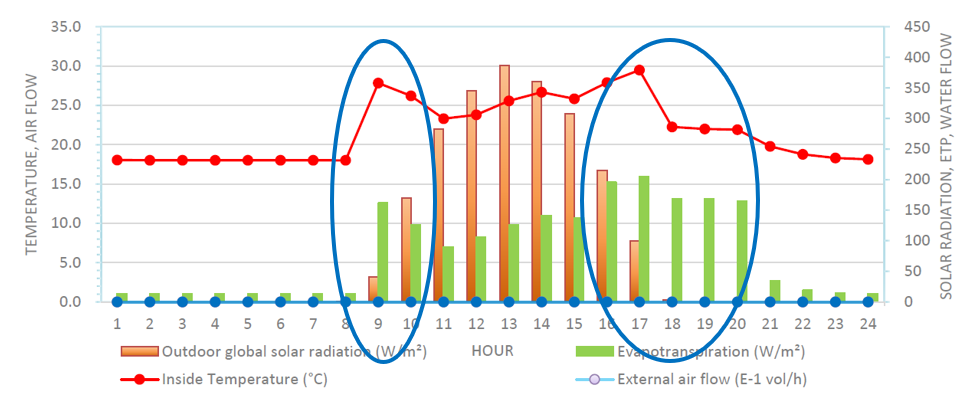
Electricity consumption and expenditures
Hortinergy also shows the electricity consumption and expenditures.
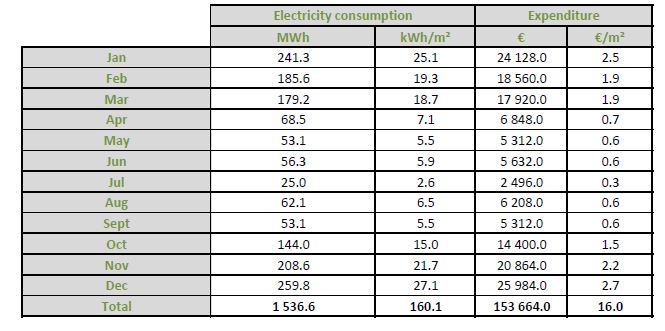
Hortinergy has been developed by Agrithermic in partnership with the CTIFL (French Interprofessional Technical Centre for Fruits and Vegetables) and Astredhor (Horticultural technology institute), Agrocampus Ouest and the agricultural high school of La Cote saint André (CFPPA).
With Hortinergy, you can also design semi-closed greenhouse and compare different parameters to optimize the climate and the energy consumption of your greenhouse project. In hot and wet climate, closed greenhouse is an interesting option to obtain an optimal climate.
Hortinergy is an online software. You can choose your offer, create an account and start your project.
